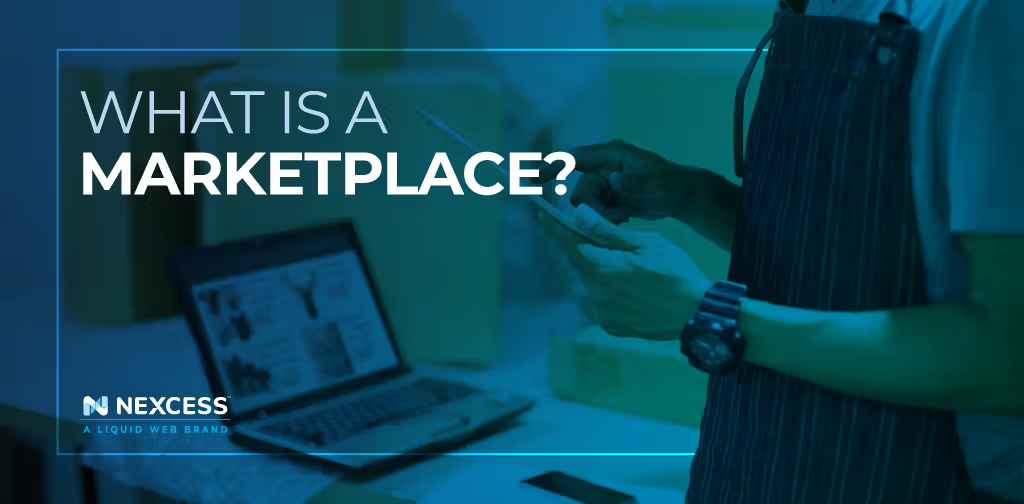You’ve probably bought something on an ecommerce marketplace and maybe didn’t even realize it. So what is a marketplace?
An ecommerce marketplace is a place where multiple sellers can list their products for sale. Amazon offers millions of different products, but most items aren’t sold directly by Amazon. Third-party or marketplace sellers make up a significant portion of Amazon’s offerings.
If you have an ecommerce business, how do you decide if marketplace selling is right for you? In this post, we look at what marketplaces are, how they work, and what strategies ecommerce businesses can use to be successful.
What is a Marketplace in Ecommerce?
Amazon isn’t the only ecommerce marketplace. Other popular ecommerce marketplaces include Etsy, Walmart.com, and eBay. The marketplace exists to connect buyers and sellers.
Retailers like Amazon and Walmart added marketplaces to their websites to expand their product offerings without investing in sourcing additional inventory. Other marketplaces like Etsy and eBay began and remain only marketplaces without a traditional retail operation.
How Do Marketplaces Work?
Selling on a marketplace begins with applying for admission or setting up your seller account. After listing your products, shoppers can buy them on the marketplace. The marketplace processes the transaction and passes along the order information to your business or fulfillment partner for shipping. The marketplace typically deducts a small commission before making a payout to your business.
Benefits of selling on an ecommerce marketplace include:
- Market Expansion. From selling internationally to reaching new demographics, marketplaces allow existing brands to reach new customers.
- Traffic and Credibility. Marketplaces offer what many new ecommerce stores lack — traffic and credibility. Buyers are often leery of purchasing from an unknown website but will add something to their Amazon cart without a second thought.
- New Source of Revenue. Marketplaces also offer a new revenue line to support your ecommerce business. By reaching new customers on the marketplace, you can increase sales.
Sell your products online, worry-free
Officially recommended by WooCommerce, our hosting is made for online businesses like yours
Drawbacks of marketplace selling include:
- Lower Margins. Marketplaces charge transaction fees to third-party sellers, so you won’t make as much money selling the same product at the same price as you would on your website.
- Fierce Competition. If you think you can just increase your price to cover the marketplace fees, you’ll want to check out the competition first. Unless you offer a one-of-a-kind product, odds are that someone is already selling something similar on the marketplace. You’ll compete on price with other sellers. You’ll also compete for views on your product listings.
- Limited Control. The marketplace handles the transaction and will be the primary point of contact for customer service issues. Businesses don’t have the same control over their data and customer experience as they do on their own websites.
What is a Marketplace Strategy?
Developing a profitable marketplace strategy begins with research. Check out the various marketplaces where you could list your products. What’s the fee structure? What competitors are already using the marketplace? Given the fee structure and the competitive pricing landscape, can you sell your products at a profit?
If you’re considering selling on Amazon, listen to our Store Builders podcast episode on The Amazon Question: How to Choose If and When to Use Amazon as a Channel.
After you’ve selected the right marketplaces to sell your products, you’ll want to optimize your strategy.
Elements of a winning marketplace strategy include:
- Excellent Product Content. High-quality product photos and snappy, detailed product descriptions help your products stand out from the competition. If you’re selling in a new market with a different language, consider paying a native speaker to edit your product descriptions so they don’t sound like you wrote them using an online translator.
- Paid Advertising. Many marketplaces sell paid listings and ads to increase views. If you’re selling a common item, paid listings can catapult your product to the top of the search results in the marketplace. As with any advertising, be cautious and set a reasonable budget.
- Pricing. Marketplace sellers constantly adjust their pricing to stay near the top of the results. Many shoppers will sort or filter their search results by price. Monitoring and adjusting your pricing will ensure a competitor doesn’t take your spot by undercutting your price by 25 cents.
How to List Products in an Online Marketplace
Managing your marketplace place listings is not as stressful as it sounds. Many marketplaces integrate with your existing ecommerce platform so you can manage product listings for your online store and marketplaces in the same place.
One of the reasons WooCommerce is such a popular ecommerce platform is how easily you can add integrations. Various WooCommerce plugins can help you sync products from WooCommerce to a marketplace and vice versa. You can find similar integrations for the other ecommerce platforms like BigCommerce and Magento.
Start With Your Own Store
Thanks to an easy integration, your marketplace selling journey begins with setting up your own store. Managed hosting solutions from Nexcess make setting up a new WooCommerce-powered online store simple.
Managed WooCommerce includes all the plugins you need to create a beautiful and functional store. To add marketplace channels, just pick the right integration and start processing your orders. Add your products, customize the look of your store, and you're on your way to generating revenue.
Try managed WooCommerce by Nexcess today.

